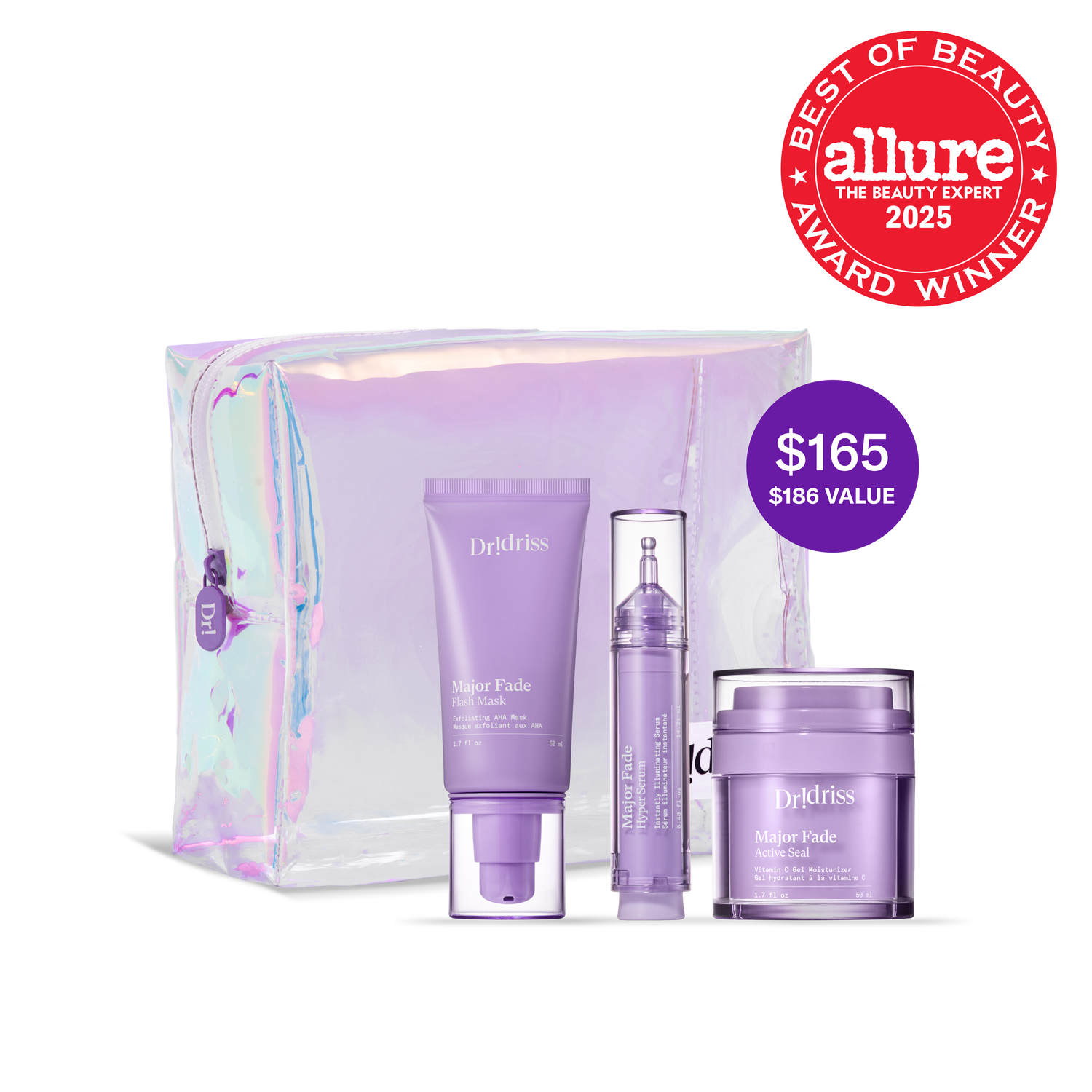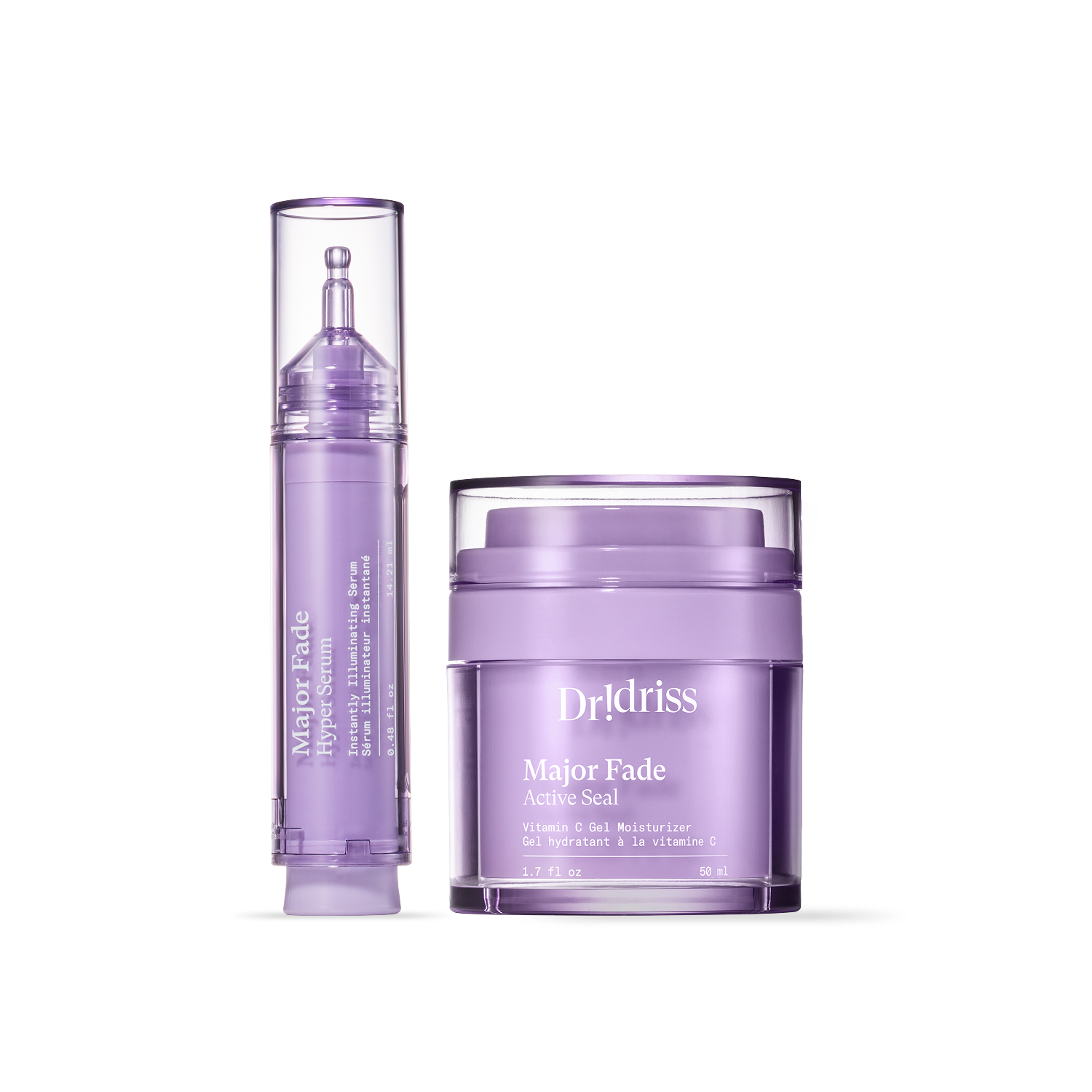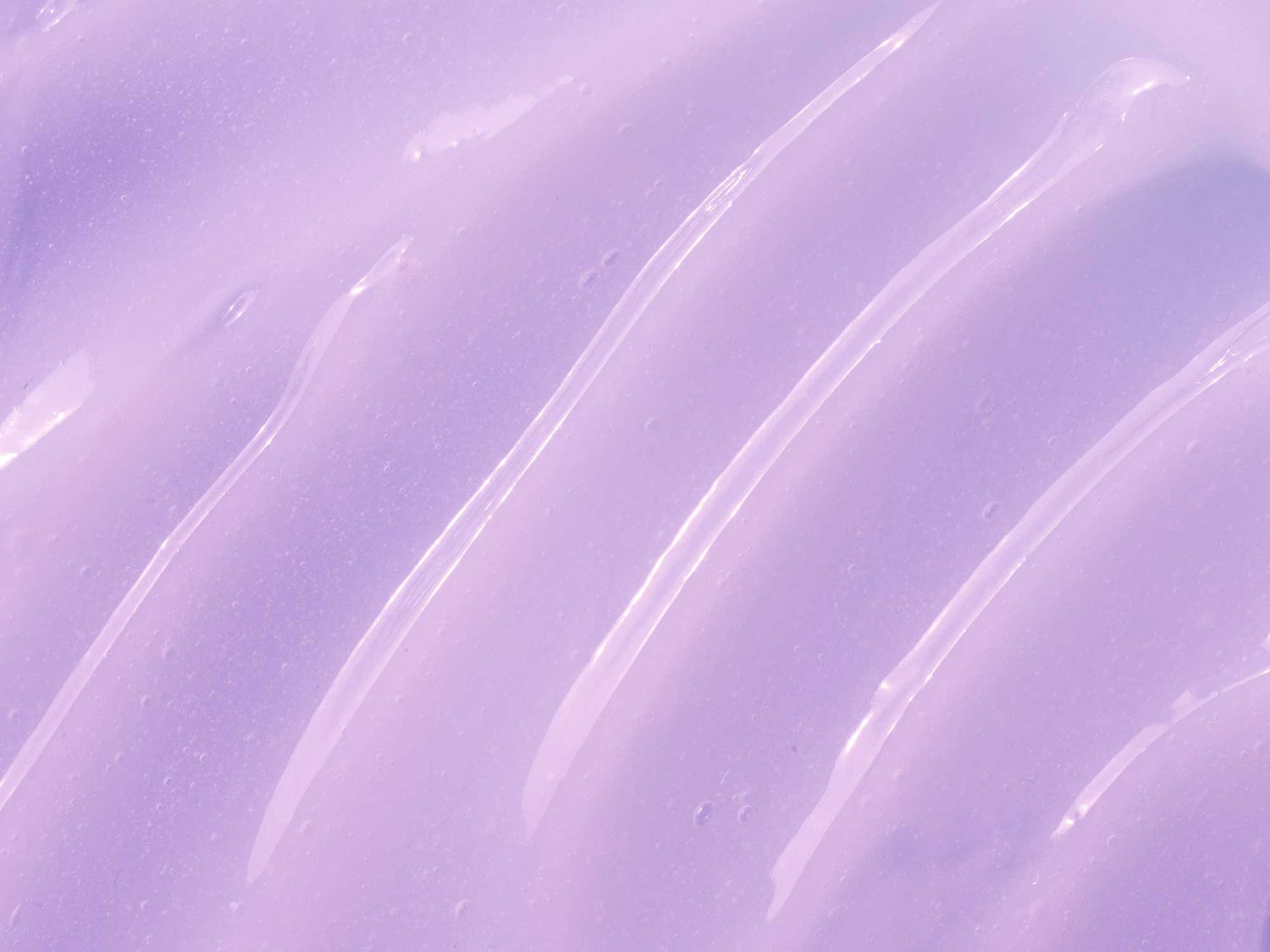
In my previous post, Everything You Need to Know About Hyperpigmentation, I summarize the best ingredients to treat all kinds of pigmentation woes — from niacinamide and alpha arbutin to tranexamic, l-ascorbic, and kojic acid, which, by the way, can all be found in our newly released Major Fade Solution System! Now that we’ve tackled the ingredients, it’s time to get you clued up on what hyperpigmentation actually looks like. Let’s take a look at the three most common forms of hyperpigmentation:

PIH refers to spots or small patches of darkened skin that are left behind once a skin injury or an inflammatory skin condition has healed. PIH usually appears as a flat area of discoloration, and the color varies from pink, red, brown, or black, depending on one’s skin tone and the degree of injury. Common causes include acne, eczema, wounds, and irritations, including picking at your scabs and pimples! 👀

2. Sun or dark spots: Flat spots or patches of discoloration induced by excess sun exposure.
Sunspots (also known as age spots or solar lentigines) typically appear on areas frequently exposed to the sun, such as your forehead, the sides of your face, chest, shoulders, arms, and hands. These usually vary in size and are tan, brown, or deep brown in color. Sunspots commonly occur in older adults but can also appear in younger people due to repeated and prolonged sun exposure.
When it comes to hyperpigmentation, it is crucial to have a consistent targeted skincare routine. Our Major Fade collection does exactly that, effectively helping to diminish the look of discoloration thanks to its combination of actives. Each product within the Major Fade Solution System is a hero product on its own, but together, they make one hell of a powerhouse!
Shop each product or the full trio here


















